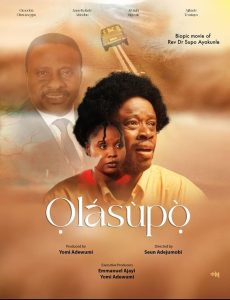THE SCIENCE AND ART OF CINEMATOGRAPHY by Chosen-Mic Adeniran

Cinematography
(from ancient greek κίνημα, kìnema “movement” and γράφειν, gràphein “to write”) is the science or art of motion-picture photography and filming either electronically by means of an image sensor, or chemically by means of a light-sensitive material such as film stock.

Cinematographers use a lens to focus reflected light from objects into a real image that is transferred to some image sensor or light-sensitive material inside a movie camera.
These exposures are created sequentially and preserved for later processing and viewing as a motion picture.
Capturing images with an electronic image sensor produces an electrical charge for each pixel in the image, which is electronically processed and stored in a video file for subsequent processing or display. Images captured with photographic emulsion result in a series of invisible latent images on the film stock, which are chemically “developed” into a visible image.
The images on the film stock are projected for viewing the motion picture.
Cinematography is the art of visual storytelling.
Anyone can set a camera on a tripod and hit record, but the artistry of cinematography comes in controlling what the viewer sees (or doesn’t see) and how the image is presented.
Film is a visual medium, and the best-shot films are ones where you can tell what’s going on without hearing any of the dialogue.
With some basic knowledge of composition and scene construction, you can plan scenes using this visual language.
Learn how different shots work together to form a clear, cohesive narrative and how to compose each shot in a way that is visually pleasing for the viewer. Understanding these simple rules will help make your films more thrilling and engaging.
History
In the 1830s, moving images were produced on revolving drums and disks, with independent invention by Simon von Stampfer (stroboscope) in Austria, Joseph Plateau (phenakistoscope) in Belgium, and William Horner (zoetrope) in Britain.
Basic Rules of Composition
There are some simple cinematography techniques that will have a great impact in making your videos look more professional.
The Rule of Thirds is a technique of dividing the frame up into a 3×3 grid, splitting your frame into nine boxes. Our natural impulse is to put our subject dead center, but a centered subject will look like they’re caught in a spotlight, and by dropping them in the center of the frame, it gives them nowhere to go. Instead, by positioning your action in any of the four vertices where those nine boxes meet, you create a balance in your composition that feels more natural.

Camera Shot Types
The nomenclature of the basic types of camera shots.
This common language is essential for writers, directors, camera operators, and cinematographers to effectively communicate visual elements of a shot, particularly the size of a subject-often a person-within the frame. Provided here is a list of the essential shot types that you need to know, along with a brief description. article, it will focus mostly on subject size and camera angle and ignore camera movements, such as tracking shots, dolly in, etc.
Shots indicating subject size
There are many ways in which you can frame your subject, from seeing their entire body to only their eyes. Generally speaking, we can break this down into three main shot sizes: Long, Medium, and Close. Long shots (also commonly called Wide shots) show the subject from a distance, emphasizing place and location, while Close shots reveal details of the subject and highlight emotions of a character. Medium shots fall somewhere in between, putting emphasis on the subject while still showing some of the surrounding environment.
It’s important to note that the following shot types only relate to subject size within the frame, and don’t directly indicate what type of lens is used to capture the scene.
The choice of lens-and, thus, the distance of the camera from the subject-remains an artistic decision for the Director and/or Director of Photography.
With that in mind, on to the list!
Extreme Long Shot (aka Extreme Wide Shot)

Used to show the subject from a distance, or the area in which the scene is taking place.
This type of shot is particularly useful for establishing a scene (see Establishing Shot later in the article) in terms of time and place, as well as a character’s physical or emotional relationship to the environment and elements within it. The character doesn’t necessarily have to be view-able in this shot.
Long Shot (aka Wide Shot)

Shows the subject from top to bottom; for a person, this would be head to toes, though not necessarily filling the frame. The character becomes more of a focus than an Extreme Long Shot, but the shot tends to still be dominated by the scenery. This shot often sets the scene and our character’s place in it. This can also serve as an Establishing Shot, in lieu of an Extreme Long Shot.
Full Shot 
Frames character from head to toes, with the subject roughly filling the frame.
The emphasis tends to be more on action and movement rather than a character’s emotional state.
Medium Long Shot (aka 3/4 Shot)
Intermediate between Full Shot and Medium Shot. Shows subject from the knees up.
Cowboy Shot (aka American Shot)
A variation of a Medium Shot, this gets its name from Western films from the 1930s and 1940s, which would frame the subject from mid-thighs up to fit the character’s gun holsters into the shot.
Medium Shot 
Shows part of the subject in more detail. For a person, a medium shot typically frames them from about waist up. This is one of the most common shots seen in films, as it focuses on a character (or characters) in a scene while still showing some environment.
Medium Close-Up
Falls between a Medium Shot and a Close-Up, generally framing the subject from chest or shoulder up.
Close-Up
Fills the screen with part of the subject, such as a person’s head/face. Framed this tightly, the emotions and reaction of a character dominate the scene.
Choker
A variant of a Close-Up, this shot frames the subject’s face from above the eyebrows to below the mouth
Extreme Close Up
Emphasizes a small area or detail of the subject, such as the eye(s) or mouth. An Extreme Close Up of just the eyes is sometimes called an Italian Shot, getting its name from Sergio Leone’s Italian-Western films that popularized it.
Shots indicating camera angle/placement
In addition to subject size within a frame, shot types can also indicate where a camera is placed in relation to the subject. Here are some commonly used terms:
Eye Level 
Shot taken with the camera approximately at human eye level, resulting in a neutral effect on the audience.
High Angle 
Subject is photographed from above eye level. This can have the effect of making the subject seem vulnerable, weak, or frightened.
Low Angle 
Subject is photographed from below eye level. This can have the effect of making the subject look powerful, heroic, or dangerous.
Dutch Angle/Tilt 
Shot in which the camera is set at an angle on its roll axis so that the horizon line is not level. It is often used to show a disoriented or uneasy psychological state.
Over-the-Shoulder Shot
A popular shot where a subject is shot from behind the shoulder of another, framing the subject anywhere from a Medium to Close-Up. The shoulder, neck, and/or back of the head of the subject facing away from the camera remains viewable, making the shot useful for showing reactions during conversations. It tends to place more of an emphasis on the connection between two speakers rather than the detachment or isolation that results from single shots.
Bird’s-Eye View (aka Top Shot)
A high-angle shot that’s taken from directly overhead and from a distance.
The shot gives the audience a wider view and is useful for showing direction and that the subject is moving, to highlight special relations, or reveal to the audience elements outside the boundaries of the character’s awareness. The shot is often taken from on a crane or helicopter.
Other common shot types
Cut-In
Similar to a Cutaway, but shows a Close-Up shot of something visible in the main scene.
Cutaway 
A shot of something other than the subject and away from the main scene. It is usually followed by a cut back to the first shot and is useful for avoiding a jump cut when editing down a section of dialogue, or editing together two separate takes.
Establishing Shot
Usually the first shot of a scene, this is used to establish the location and environment. It can also be used to establish mood and give the audience visual clues regarding the time (night/day, year) and the general situation. Because they need to provide a great deal of information, Establishing Shots are usually Extreme Long Shots or Long Shots.
Master Shot
Term given to a single, uninterrupted shot of a scene. This shot can be the only shot used by a director to cover a scene, or edited together with additional shots. While it’s commonly a Long or Full Shot, a Master Shot can be a closer shot, or consist of multiple shot types if the camera is moving throughout the scene.
Point of View Shot (POV)
Shot intended to mimic what a particular character in a scene is seeing. This puts the audience directly into the head of the character, letting them experience their emotional state. Common examples are of a character waking up, drifting into unconsciousness, or looking through a scope or binoculars.
Reaction Shot
Shows a character’s reaction to the shot that has preceded it.
Reverse Angle Shot

A shot taken from an angle roughly 180 degrees opposite of the previous shot. The term is commonly used during conversation, indicating a reverse Over-the-Shoulder Shot, for example.
Two Shot A shot in which two subjects appear in the frame.
A shot in which two subjects appear in the frame.
180 Degree Rule
You might hear on set a DP or camera guy to discuss the 180 Degree Rule and say:
“You can’t put the camera there, you’ll cross the line”
There’s a lot more to shooting a great scene than just planting a camera somewhere and yelling action. We all want to shoot a scene that can be cut together to achieve great continuity with a good variety of shots.
The 180-degree rule is a cinematography guideline that states that two characters in a scene should maintain the same left/right relationship to one another. When the camera passes over the invisible axis connecting the two subjects, it is called crossing the line and the shot becomes what is called a reverse angle. Reversing the angle is commonly thought to be disorienting and can distract the audience from the intent of the scene.

The videos the illustrate the basic principles of the 180-degree rule, establishing action lines, working with shifting action lines, and redefining the action line using neutral shots, camera movement, and cutaways. Knowing how to apply the 180-degree rule, and when you might want to break it can take your production skills to a higher level.
Conclusion
These basic lessons should get you thinking like a cinematographer. Treat your camera as another character in the scene, exercise proper framing of subjects, try different camera angles and use the various types of shots to set the tone for your scene. By understanding the language of visual storytelling, you will open up a whole new dimension to your films.
Reference & Contributing points from
www.hbphotovideo.com
courser.com
Wikipedia







